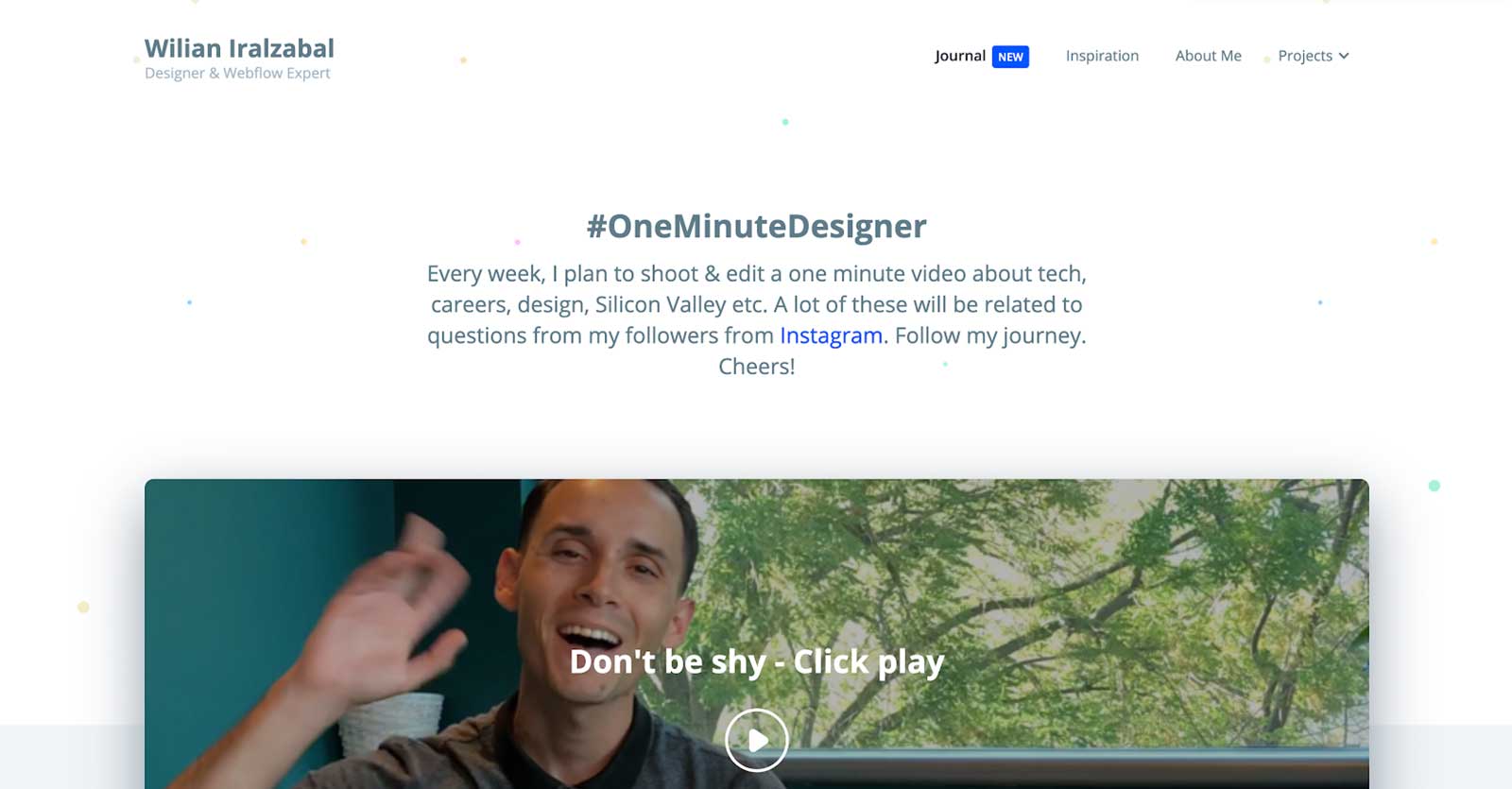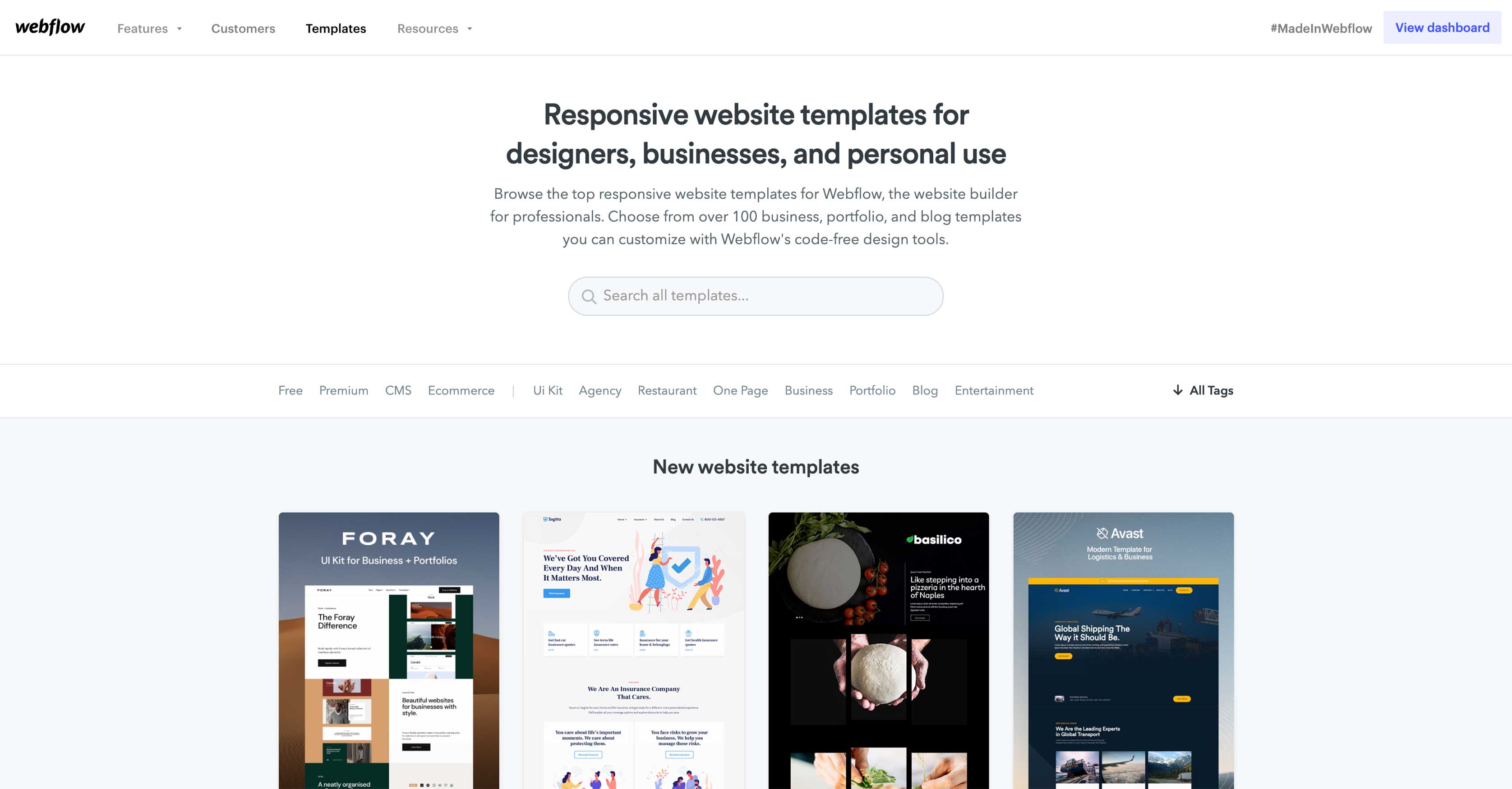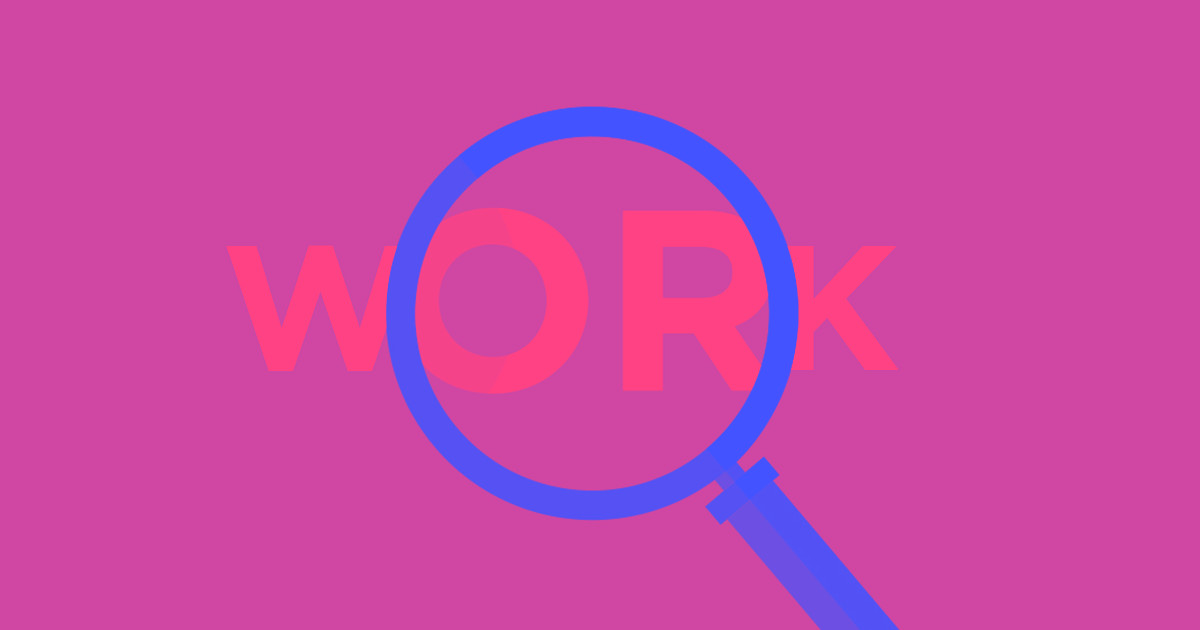“Neal, how do you keep finding high-paying work?”
That’s the most common question I hear — aside from, “What is wrong with you, Neal?!” Unfortunately, there isn't a simple answer to either question, but since this is a web design blog, and not a psychiatrist's office, let’s focus on the first one.
Now, I don’t want to mislead you, so I want to be clear: there's no one path to freelancer Mecca. In reality, there are many different paths, and only some will work for you. I’ll walk you through the seven best methods I’ve found (and throw in a bonus).
I strongly recommend testing all seven. Dismissing any of these out of hand could set you back on the road to successfully freelancing. I’ve made each one work wonderfully for me, and there’s no reason they won’t work for you too.
Just keep in mind that the beginning is always the hardest part. Once you’ve proven yourself to a couple clients, you'll be continuously turning down work, and you'll be able to increase your contracting rates higher than you originally thought possible. Think I’m exaggerating? Ask any truly successful freelancer you know.
Here are the strategies and media I'll walk you through:
- Your portfolio: personal website, Behance, and Dribbble
- Freelance marketplaces: Upwork, AngelList, and Toptal
- Blogging: Whether on Medium, your own site, or here on Webflow’s blog, blogging can be an amazingly effective way to establish yourself as an expert in your field. Share your thoughts and engage in online conversations
- Template marketplaces: Webflow templates, CreativeMarket, ThemeForest, and the Webflow Showcase
- Networking: Go where your customers are and talk to them one-on-one.
- Word of mouth: Make it easier on yourself… stay in and have people do the talking for you.
- Hustling: Hack together solutions to get your name out into the wild.
I’ll be going into detail on each one, giving you the information you need to start finding clients today. The goal is to give you a sufficient starting customer base that allows you to either quit your job (if that’s what you want) or grow your already-established freelancing business.
Ready? Let’s do this.
(Oh, and be sure to bookmark this page — it’s a living guide. We’ll update it with new information as it comes our way through emails, tweets, and in the comments section below.)
7 ways to find freelance design work
1. Build and update your portfolio website
If you're a web designer, and you don't have your own personal website, with a portfolio, then you have some self-examination to do.
Your portfolio website is step one. You can’t lazily email prospective clients a list of links to sites you’ve worked on. Your personal site should be the crown jewel of your portfolio. You have to prove yourself as a design professional if you want to be taken seriously and secure high pay. Your portfolio is your cred.
None of the rest of this post will hold true if you’re lacking a portfolio. If you don’t take the time to do this, the next designer will. This is a crowded space, so don’t expect cutting corners to work out well.
Once you have a portfolio built, link to it everywhere — even where it doesn’t seem relevant: in your email signature, on your social media channels, and on business cards if you have them (yes, cards are old school, but they're still useful for random social encounters … someone’s always looking for a website).
2. Create social profiles on design websites
You should also create accounts on sites like Dribbble and Behance. These sites have well-established SEO (search engine optimization), so they often show up on the first page of Google. Almost certainly more often than your own portfolio does! Use their SEO advantage to drive more search traffic to your work and site — even if you don't bother engaging on those platforms.
Dribble and Behance were built for designers who want to share their work and get feedback from other professionals. That makes them excellent ways to get your designs seen by potentially thousands of people who may eventually refer you. You might even get really helpful feedback to improve your skills.
(Never design in a vacuum! Even the best designers continually seek and listen closely to feedback from peers, colleagues, and others. You can always grow as a designer.)
Of course, building a portfolio requires detailed, time-consuming work. So when you sign up for Webflow, be sure to fill your public portfolio with your best work. It’s low-effort, and has already brought many designers a wealth of job inquiries. Other designers, companies, and would-be clients can follow you and message you about contracts.
Remember, don’t just wait for people to come to you — make it easy for them to stumble on your work in so many different places that they'll have no choice but to reach out. Seriously — this can have a significant impact the volume of work you get.
Why? Because once you have even a couple contracts in place, it’s much easier to get more. Freelancing is a career path built on referrals. Good designers who reliably produce quality work always get referred, especially if they’re easy to work with.
(In fact, being an enjoyable person to work with matters more than how good your portfolio is. Life is short, and people want to work with good people.)
If you’re looking for inspiration for your portfolio site, we have a list of some of the best sources of web design inspiration on the web, or if you want help getting started, you can check out the portfolio templates on Webflow.
If there’s one secret to freelance design and development, it’s that you only have to put serious energy into securing your first few contracts. The rest will come more naturally.
3. Freelance job marketplaces
There are many freelance websites out there to find work. Here are a few top ones:
Upwork
Upwork is an online marketplace designed to connect freelance designers with prospective clients. Create a profile, upload your portfolio, and start bidding on design projects. You can even apply for jobs you might not feel totally qualified for yet — that’s how you grow and become an even better designer.
One thing to note before you join Upwork: You’ll probably notice a lot of bids far below a rate you’d be comfortable working for.
Don’t let this discourage you. I consistently won over 50% of my bids on Upwork, even when I was vying against 30 other people asking for significantly less.
Why? Because employers don't want to waste their time. They generally prefer to work with freelancers that have great design skills and are good communicators who don’t come with the baggage of a 16-hour time difference. In other words, no, clients on these platforms don't just care about how much they're paying. They want quality. Massive companies like GoDaddy and Fortune 500's rely on these platforms. Don’t dismiss them.
If you’re not comfortable with written communication, honing your English and your writing will be more important than improving your portfolio. That’s priority number one. Otherwise, international work (or work in the biggest markets) will often be hard to find — or disproportionately low-paying.
Two quick tips for Upwork:
- Complete your profile ASAP — their algorithms will rank you higher in search results!
- Work toward Top Rated status so you can get priority access to the best-paying jobs
AngelList
The combined startup/employment directory AngelList provides another fantastic place to find freelance work. Companies searching for skilled employees there range from “dude in a basement” to booming enterprises like Uber and Stripe, so it’s an excellent place to secure contract work with a well-funded startup.
Just create a profile, search for jobs, and — if your portfolio is up to par — expect quite a few to come looking for you. A junior developer friend I recently visited had a Skype call with a new company from AngelList every day I was there — so believe me, it works.
If the position excites you, and there’s a great fit with the startup, you could even consider joining the team full-time, and gain serious equity in the process! Welcome to startupland.
Toptal
Toptal is a freelance marketplace I’ve seen getting some attention on Twitter (on both the designer and the client side).
They advertise themselves as having the top 3% of freelance talent out there. They're able to do this by taking applicants through a screening process to make sure that design freelancers are a good fit for their network. This makes sure their clients, like Airbnb, Thumbtack, and even Zendesk, receive the best freelancer designers out there.
While it may be a little harder to get into Toptal, compared to something like Upwork, you can be assured that you'll be working with quality clients.
4. Create content and start blogging

Product Hunt’s Ryan Hoover has a great article about how building an audience is the best first step to recruiting a great cofounder or startup team, and the same goes for finding clients when freelancing.
Writing intelligently about the topics you’re most passionate about can position you as an expert in your field. It’s the quickest way to garner credibility, awareness, and — if you take the time to thoughtfully share your posts with the right people — some much needed traffic to your design portfolio.
Start your blog on your personal site, and repost to Medium a few days later. Write useful and relevant industry content. Make sure to let your personality shine through your posts. Remember, clients want to work with good, interesting people, and your writing can show that you’re exactly that.
So show your prospects that you have impressive insights and opinions, and the desire to help others by sharing them. This is all about building your personal brand. It’ll undoubtedly turn some people away, but those people would be terrible clients for you anyway. Be yourself and you’ll attract people who will wind up loving working with you.
Don’t expect a monsoon of visits to start with. Like all things that matter, building an audience takes time, patience, consistency, and some marketing. Do not get discouraged. A blog is a long-term investment in yourself. You'll always get some value out of it, even if it’s not in the form of paying clients. A few views from the right people can mean infinitely more than a million views that lead nowhere. Numbers aren’t everything. Create as many opportunities as possible for inbound serendipity.
Just know that the work doesn’t end after you hit Publish. Promote your blog by posting it on social media platforms, Hacker News, Reddit, and contacting newsletters, article curators, and other bloggers/tweeters in the industry who might find your post useful and share-worthy.
Just don’t be spammy about it. The purpose is to educate, not self-promote.
Related read: Bringing personality to your design work
5. Template marketplaces

Designing website templates and releasing them is not only an excellent way to earn passive income — i.e., get paid even while you sleep — but it's also an excellent way to get publicity and experience. If people see and buy your templates on Webflow, Creative Market, or Themeforest, then they’re seeing — and even better, experiencing — living, breathing examples of your work.
These individuals will be likely to contact you with a request to fully customize the design of their pre-existing site, and that could pay very well.
It gets even cooler though: Having your own portfolio of templates will speed up future client work by giving you a base of readymade designs to work from! Plus, templates are a great excuse to add content to your portfolio. See why it’s so important to have a portfolio?
The Webflow Template Marketplace
The Webflow template marketplace is the newest of the three but still has the potential to bring in a nice stream of passive income. The great part about making your templates in Webflow is that you can still sell them on Themeforest and Creative Market as well. And for selling templates, distribution is the name of the game.
Creative Market
Creative Market is another great marketplace, not just for templates but for anything design-related, from fonts to photos and even design patterns, you can monetize all your work.
Themeforest
Themeforest is definitely one of the most well-known out there. Just know that they have one of the largest audiences and inventories on the web, so you’ll need to do more promotion to make that channel work for you.



















Grow your freelance business
Take on more clients and build websites faster. Webflow empowers freelancers to design and deliver with confidence, while keeping full creative control.
6. Networking and word of mouth
The number-one way to find quality clients is to get out and meet people (figuratively and literally) at non-design events.
Once up a time, I’d spend all day at home, applying for mechanical engineering jobs in isolation. I was unsuccessful for months.
I did, however, make serious headway on my Netflix backlog. Serious progress, people.
Eventually, I gave up and focussed on pursuing a career in web design and development (which I was much more passionate about), and started getting out and socializing.
Within weeks, I had job offers coming in from my loose-knit network of new acquaintances. It’s not rocket science: People prefer to hire people they already know and like — not the faceless folks clogging their inbox with links.
Notice how I didn't specifically describe who the people I met were? That’s because you need to meet all kinds of people. You have no idea who your next client will be.
But they probably won’t be at a web design meetup — those are filled with jobless designers.
All of this is worth repeating: Go to any and every meetup that matches your interests, and simply tell people you’re a web designer. Watch what happens. Everyone needs a website, or knows someone who does. That's what’s so great about freelancing in this industry.

Some places to start meeting people:
- Meetups
- Sports events and classes
- Cafes
- Abroad (for some reason, people are a lot more open to talking to strangers while traveling)
- Parties
- Slack groups
- Conferences and conventions
Just keep in mind that, no matter the event type or place, you have to actually talk to people you don’t already know.
Tip: Don’t be the typical “business networker.” Don’t bounce from person to person shaking hands, fake-smiling, repeating first names every sentence, and handing out business cards. Be legitimate. Make real connections.
The other side of the networking coin — word of mouth — comes from building up a client base, having lots of contacts, and building your personal brand (with your blog, portfolios, and templates). This takes time. Do great work, treat your clients with respect, keep in touch with past clients, and follow the rest of the advice in this article, and you'll absolutely be fine.
With networking and word of mouth, you can easily reach a state of having more work offers than you can sustain—without ever actually working for it. When this happens, you can increase your rates. Ka-ching.
Personally, I turn down contract offers on a weekly basis. And they’re all the result of word of mouth and networking I did months ago.
It honestly doesn't take long to get to this point if you produce quality work and put yourself out there.
7. Hustling
Hustling is the art of working extremely hard and extremely smart. In the context of freelancing, hustling involves going out and finding work directly. For example: finding websites or businesses that desperately need your services.
Does your favourite pub have a terrible site? Why not talk to the owners and convince them they need you to fix it?
If you have the right personality, and the drive, this can be an extremely effective way to whip up some initial work. It just isn’t particularly glamorous. It also requires your repeated, hands-on time and energy. (In contrast, writing blog posts or setting up a portfolio one time can attract customers for years to come.) The success rate of in-person contact, however, is much higher. The trade-off is lower volume.
Bonus: Freelance.tv
Fresh out of the studio (or maybe his cool van) Dann Petty released Freelance.tv. It’s a series of 10-minute interviews with freelancers that explores how they find, work with, and keep clients (and much more).
As you may have noticed from reading this post (or maybe not), hearing from other freelancers about their experiences can be extremely helpful. Check out his new episodes and also his documentary, Freelanced.
Now get out there and find your next gig
If you’re sitting at home, desperately hoping clients will come to you, I have news for you: They won’t.
You have to put yourself out there to start, and show prospective clients that you have tangible, valuable skills to offer.
Luckily, this is an industry where skill and contacts trump all — education is irrelevant. So take advantage of that.
So to summarize, here are your next steps for getting clients and building your freelancing business:
- Build your portfolio. Make it gorgeous. Share it everywhere. You can use Webflow to do it yourself without coding.
- Create profiles on Behance, Dribbble, and Webflow to connect with other designers and potential clients. Use their SEO advantage to drive more traffic to your website.
- Create a profile on Upwork and Design Inc, and bid on contracts. Be confident, and don’t be scared by inexpensive competitors. Also use AngelList to find contracts with promising or established startups.
- Start meeting people. Get out, meet, and befriend as many non-designers / developers as possible. Be legitimate.
- Start a blog to complement your portfolio. Write thoughtful, useful content to establish yourself as an expert in your discipline. Let your personality shine through.
- Convert your websites designs to templates, and release them on sites like Webflow, CreativeMarket, and ThemeForest to earn passive income and awareness.
- If it’s your style, start hustling. Find people who legitimately need your services and tell them why.
But most of all:
"Do something! Even if it's wrong."
– My friend's dad
When you’re starting out, it can be better to do the wrong thing than nothing at all. In the process, you’ll learn, and you might just stumble into something that works beautifully.
Just try to not to be so wrong nobody will ever work with you again. Ever.
Now, stop reading, and get out there and land some clients!
Oh — and If you’re a freelancer, how do you find clients? Is there anything I missed?











.jpeg)



















